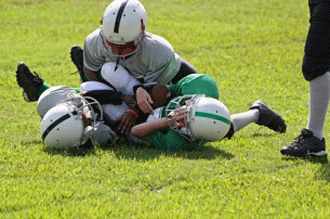The Centers for Disease Control and Prevention (CDC) released new clinical recommendations for health care providers treating children with mild traumatic brain injury (mTBI), often referred to as concussion. The CDC Guideline on the Diagnosis and Management of Pediatric Mild Traumatic Brain Injury, published in JAMA Pediatrics, is based on the most comprehensive review of the science on pediatric mTBI to date — covering 25 years of research.
Andrew Gregory, MD, with the Vanderbilt Sports Concussion Center was one of the authors of the guideline.
“A lot of work went into this to create something for clinicians that was useful and evidence based,” Gregory said. “It’s a comprehensive document, but there are some really practical helpful tools for clinicians who take care of athletes with concussions.”
The guideline also has a summary page for busy clinicians who need quick reference points.
Offering 19 sets of clinical recommendations that cover diagnosis, prognosis, and management and treatment, the CDC Pediatric mTBI Guideline is applicable to health care providers in all practice settings. The CDC Pediatric mTBI Guideline outlines specific actions health care providers can take to help young patients and includes five key practice-changing recommendations:
- Do not routinely image pediatric patients to diagnose mTBI.
- Use validated, age-appropriate symptom scales to diagnose mTBI.
- Assess for risk factors for prolonged recovery, including: history of mTBI or other brain injury, severe symptom presentation immediately after the injury, and personal characteristics and family history (such as learning difficulties and family and social stressors).
- Provide patients with instructions on returning to activity customized to their symptoms.
- Counsel patients to return gradually to non-sports activities after no more than a two-three days of rest.
In developing the guideline, CDC followed a rigorous process. An extensive review of scientific literature, as well as feedback from clinical experts, the public, and partner organizations informed the development of the recommendations. The hope is that this guideline will lead to future studies and guidelines that further advance the care of patients of all ages with mTBI and other serious brain injuries.
To help health care providers implement the recommendations, CDC developed supporting tools and materials. Ranging from screening forms to assess young patients to discharge instructions and recovery tips for parents, these resources will help health care providers take action to improve the care of young Americans with mTBI. These tools and materials are available at www.cdc.gov/ HEADSUP.
As the nation’s leading public health agency, CDC is committed to helping those at increased risk for mTBI and other serious brain injuries. There is not a one-size-fits-all approach to protecting young Americans from these injuries. However, this guideline is helping fill a critical gap aimed at improving the care of this vulnerable population.















